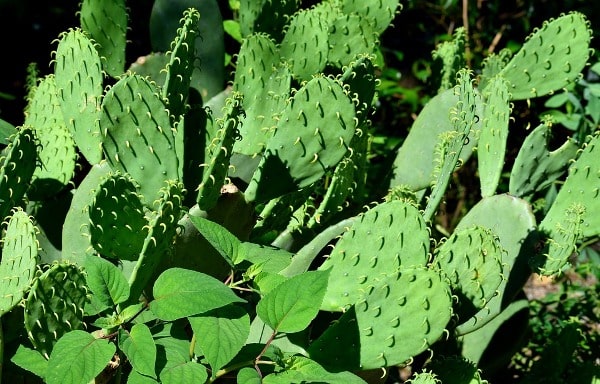As we see the cactus as a thorny plant that has its benefits. Cactus farming is not that hard. We didn’t know, but there are several benefits of cactus in our life. However, many growers and Agri entrepreneurs are clueless about the advantages and profits of cactus farming. Therefore, we have reached up with this report on a guide to cactus agriculture. The demand for cactus agriculture is increasing rapidly due to its unique qualities. Yet, there is still much scope for creating and growing cactus in India.
Every part of the cactus plant is helpful. The fruits and leaves are utilised for human consumption. The cactus works are the best fodder crop for feeding cattle in the livestock segment. Parts of cactus plants are used as raw fabric for various industries to prepare dyes, plywood, glue, soaps, and adhesives. In addition, cactus is also used in fabricating pharmaceutical products for hypoglycemia, diabetes, high blood cholesterol, obesity and various other diseases. Other cactus is also used in cosmetic industries to organise decorative effects like shampoo, body lotions, body creams, etc.
Cactus Health Benefits
- Cactus is a rich source of antioxidants. In addition, it also eliminates the hangover.
- It controls blood sugar levels and also treats enlarged prostate glands.
- Cactus also decreases cholesterol levels in the human body.
- In addition, they protect the nerve cells and are also antiviral for the human body.
Cactus planting and propagation
It is easy to start cactus farming. Any part of the manufacturer’s leaves is cut and grown in the soil. One year cutting of the mother cactus plants is better than second-year mother plant cuttings. Cactus planting is done during the late-bound or early summer seasons. Cactus is developed well at a spacing of 6m × 6 m to 4m × 6 m. In addition, deeper planting is most suitable for cactus planting. For land preparation, the farmtrac 60 powermaxx tractor model is good and gives durability.
Intercultural Techniques in Cactus Farming
Drip irrigation is more suitable for cactus agriculture. However, watering is done once or twice a month. However, the cactus fruit size relies upon the water resource. Weeding is done depending upon the weed power.
The yield of Cactus farming
On average, cactus fruit product is 1 ton/ha/ year. However, it may grow to 25 tons/ha/year if adequate irrigation is given.
Harvesting of cactus farming
Cactus fruits and pads are harvested by wearing thick hand gloves and eyeglasses. Harvesting is done during the light. Cactus leaf places are harvested when they attain a big enough size. Fruits are harvested when they reach pale yellowish-green for work and rinse for local business. For harvesting purposes, Powertrac Euro 47 is best for productive farming.
Post-harvest of cactus agriculture
Fruits are filled on the day of reaping. Cactus fruits are held at 60C – 100C. The grading of cactus fruits varies from area to area.
Advantages of Cactus farming
There are multiple benefits of cactus farming:
- The main advantage is cactus farming requires less water or no water.
- The boom of cactus cultivation is overgrowing.
- The cactus farmer can use the cactus plant parts as multipurpose fruits for human consumption, and leaves for the livestock feed.
- Cactus pads are used as traditional medicine.
Kinds of Cactus Plants In India
The cactus, known by its family character of Cactaceae, is a unique and famous plant. It’s known for its wide assortment of species, each particular information. They thrive in dry, hot climates. Cactus need very minimal water, unlike most plants, succeeding in well-drained sites. They store what water they do get, allowing them to survive shortages.
Bunny Ears Cactus
Initially from Mexico, the bunny ears cactus is called after its appearance. It has two pads that are bunny ear-shaped. They are covered with glochids or brown needles and should be taken carefully. The bunny ears cactus grows to two or three feet, making it the perfect house plant. If exposed to enough light, it gives white blooms and purple fruits in the summer.
Chin Cactus
Popularly understood as the chin cactus, the Gymnocalycium is a South American cactus species. Its name means “naked calyx” in Greek, referring to the flower buds’ lack of hair or spines. Some chin cacti seek shade depending on the variety, while others thrive in sunlight.
Saguaro Cactus
The Saguaro cactus can rise to forty feet, but it grows gradually. This means it can be utilised as an indoor plant for years before you require it to move outdoors. It has a barrel-shaped body, providing it with the classic cactus formation. Native to the Sonoran Desert, this plant needs a lot of light. If kept as an indoor factory, be sure to put it in natural daylight.
Old Lady Cactus
This plant is a pincushion cactus in the mammillaria home, with 250 species. It has hairs and divides and is known for its halo of tiny pink or purple blossoms blooming in spring. The old lady cactus should be developed in a sandy potting mix and flooded every week.
Cactus has many good qualities, but people hesitate to plant cactus at home because of their thorny quality. Through this blog, you get all the information about the cactus plant.

